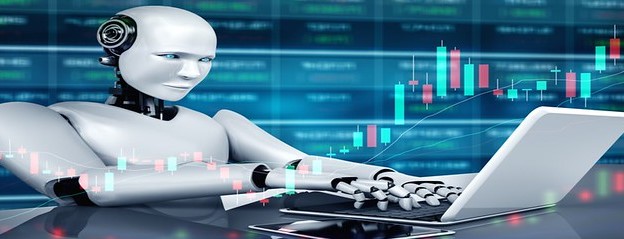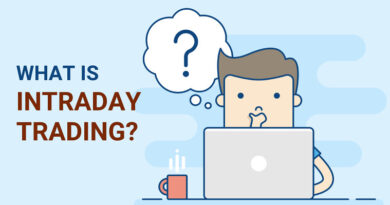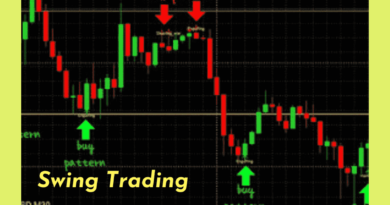Robotic Trading|Algo Trading: Is it Killing the Human Touch in Financial Markets?
Introduction
Robotic trading, also known as algorithmic trading or automated trading, has revolutionized the financial markets by leveraging advanced technology and computer algorithms to execute trades.
Robotic trading has transformed the way financial markets operate, introducing efficiency and speed to trading processes. As technology continues to advance and algorithms become increasingly sophisticated, the future of robotic trading holds great promise.
What is Robotic Trading?
Robotic trading involves the use of pre-programmed instructions and mathematical models to analyze market data, identify trading opportunities, and execute trades without human intervention. It relies on sophisticated algorithms that process vast amounts of data and make rapid trading decisions based on predefined rules and parameters.
The appeal of robotic trading lies in its potential to enhance trading efficiency, reduce human errors, and exploit market opportunities with speed and precision. By removing emotional biases and human limitations from the trading process, robotic trading aims to optimize investment strategies and maximize returns.
How Does Robotic Trading Work?
Robotic trading, also known as algorithmic trading or automated trading operates on the principle of using computer programs and algorithms to execute trades in financial markets. These programs analyze market data, identify trading opportunities, and execute trades based on predefined rules and parameters. Here’s a breakdown of how robotic trading works:
- Algorithm Development: The first step in robotic trading is the development of trading algorithms. These algorithms are created by traders, quantitative analysts, or computer programmers and are based on specific trading strategies or methodologies. The algorithms contain sets of rules and conditions that determine when and how trades should be executed.
- Market Data Analysis: Robotic trading relies heavily on analyzing vast amounts of market data in real-time. This includes price data, volume data, market depth, and other relevant information. The algorithms process this data to identify patterns, trends, and potential trading opportunities.
- Trading Signal Generation: Based on the analysis of market data, the algorithms generate trading signals or indicators. These signals indicate whether to buy, sell, or hold a particular financial instrument. The algorithms may use various technical indicators, statistical models, or machine learning techniques to generate these signals.
- Trade Execution: Once the trading signals are generated, the algorithms automatically execute trades according to predefined parameters. This is typically done using direct market access (DMA) technology, which allows for fast and efficient trade execution. The algorithms submit orders to the market electronically, taking into account factors such as order size, price limits, and timing.
- Risk Management: Robotic trading systems incorporate risk management mechanisms to mitigate potential risks. These mechanisms include setting stop-loss orders to limit losses, applying position sizing rules to manage exposure, and incorporating risk management models into the algorithms themselves. Risk management is an essential aspect of robotic trading to protect against adverse market conditions.
- Monitoring and Optimization: Robotic trading systems continuously monitor trades, market conditions, and performance metrics. This allows traders and system operators to track the effectiveness of the algorithms and make necessary adjustments or optimizations. Parameters and strategies can be refined based on ongoing analysis and feedback.
- Backtesting and Simulation: Before deploying algorithms in live trading, they are typically backtested and simulated using historical market data. Backtesting involves applying the algorithm to past market conditions to assess its performance and potential profitability. Simulation allows traders to run algorithms in a simulated market environment to gauge their effectiveness before risking real capital.
- Market Connectivity and Infrastructure: Robotic trading relies on high-speed connectivity to access market data and execute trades swiftly. Traders and firms invest in robust technological infrastructure, including fast and reliable internet connections, servers, and execution platforms, to ensure efficient algorithmic trading operations.
Diverse Applications of Robotic Trading
Robotic trading, also known as algorithmic trading or automated trading, encompasses various areas within the financial markets where automated strategies are applied.
Equities Trading:
Robotic trading is extensively utilized in equities markets. Algorithms execute trades based on predefined rules and parameters, aiming to exploit price discrepancies, market inefficiencies, or quantitative signals. These algorithms can be designed for different trading styles, including market making, statistical arbitrage, trend following, and mean reversion.
Futures and Commodities Trading:
Robotic trading is prevalent in futures and commodities markets. Algorithms analyze price movements, supply and demand dynamics, and technical indicators to identify trading opportunities. These algorithms can be used for speculative trading, hedging, spread trading, or capturing price anomalies in various commodities, such as energy, metals, agricultural products, or financial futures.
Foreign Exchange (Forex) Trading:
The forex market is highly liquid and operates 24/5, making it conducive to robotic trading. Algorithms in forex trading analyze currency pairs, economic indicators, and technical patterns to execute trades. High-frequency trading strategies are often employed in forex markets due to the large number of transactions and the availability of real-time data.
Fixed Income and Bond Trading:
Robotic trading has gained prominence in fixed income and bond markets, where it can assist in efficient trade execution and liquidity provision. Algorithms analyze bond prices, yield curves, credit spreads, and macroeconomic data to identify trading opportunities. These algorithms may aim to capitalize on yield differentials, relative value trades, or interest rate expectations
Options Trading:
Robotic trading is employed in options markets for strategies such as options market making, volatility trading, and statistical arbitrage. Algorithms analyze options pricing models, implied volatility levels, and options Greeks to identify opportunities for trading options contracts. They can dynamically adjust options positions based on market conditions and risk management parameters.
Quantitative Investment Strategies:
Robotic trading is employed in quantitative investment strategies, where algorithms generate signals for portfolio management and asset allocation decisions. These strategies combine statistical analysis, mathematical models, and historical data to construct and rebalance portfolios. Algorithms can be designed for factor-based investing, trend following, risk parity, or other quantitative approaches.
The emergence of cryptocurrencies has seen the rise of robotic trading in this market. Algorithms can execute trades in cryptocurrencies based on price movements, technical indicators, or market sentiment. The highly volatile nature of cryptocurrencies makes them suitable for algorithmic trading strategies that can capitalize on short-term price fluctuations.
Benefits of Robotic Trading
- Increased Speed and Efficiency: Robotic trading systems operate with incredible speed and efficiency, executing trades in milliseconds or microseconds. By automating the trading process, robotic trading eliminates the delays associated with manual trading, such as placing orders over the phone or manually entering trades.
- Removal of Emotional Biases: Robotic trading eliminates emotional biases from the equation by strictly adhering to pre-programmed rules and parameters. As a result, trades are executed based on objective criteria and data analysis, reducing the potential for impulsive or emotionally-driven decisions.
- Enhanced Data Processing and Analysis: Robotic trading systems have the ability to process vast amounts of market data in real time. They can analyze multiple indicators, charts, and historical patterns simultaneously, identifying trading signals and opportunities that may be challenging for human traders to detect.
- Improved Order Accuracy: Robotic trading systems eliminate the possibility of manual input errors, ensuring accurate order placement and execution. This reduces the chances of costly mistakes, such as entering incorrect order quantities or executing trades at the wrong prices.
- Consistency in Trade Execution: Robotic trading systems execute trades consistently and precisely as per the predefined trading rules and parameters. They are not susceptible to fluctuations in human behavior or mood that can impact trading decisions. This consistency helps maintain trading discipline and ensures that trades are executed according to the intended strategy.
- Backtesting and Optimization: Robotic trading allows for extensive backtesting and simulation of trading strategies using historical market data. Traders can evaluate the performance of their algorithms over a range of market conditions and adjust parameters accordingly. This enables them to refine and optimize their strategies before deploying them in live trading, potentially improving the overall profitability and risk-adjusted returns
- 24/7 Market Monitoring: Robotic trading systems can continuously monitor the markets, even outside of regular trading hours. They can scan multiple markets and instruments simultaneously, identifying trading opportunities and reacting to market events in real time.
- Scalability and Diversification: Robotic trading allows for scalability and the ability to trade multiple instruments simultaneously. Traders can deploy algorithms across various markets and asset classes, diversifying their trading strategies and spreading risk. The automated nature of robotic trading enables traders to handle larger volumes of trades efficiently and manage a more extensive portfolio.
Drawbacks and Challenges
- Technological Complexity: Robotic trading relies on sophisticated technology, including complex algorithms, high-speed connectivity, and reliable infrastructure. Developing and maintaining such systems require significant technical expertise and resources. Traders and firms need to invest in advanced technology, data feeds, and execution platforms, which can be costly and time-consuming.
- System Vulnerabilities: Robotic trading systems are not immune to technical glitches, software bugs, or connectivity issues. These vulnerabilities can lead to system failures, delayed trade execution, or erroneous orders. Even minor disruptions or data discrepancies can have significant consequences in high-speed trading environments.
- Risk Management Challenges: Robotic trading introduces unique risk management challenges. Algorithms operate based on predefined rules and parameters, and their performance is highly dependent on historical data and market conditions. Sudden shifts in market dynamics or unforeseen events can lead to unexpected losses or adverse performance.
- Regulatory Considerations: Regulators have been closely monitoring robotic trading activities to ensure fair and orderly markets. Algorithmic trading may raise concerns regarding market manipulation, spoofing, or disruptive trading practices. Regulatory frameworks, such as circuit breakers and market surveillance systems, have been established to mitigate these risks. Market participants need to comply with regulations, reporting requirements, and risk control measures specific to algorithmic trading.
- Impact on Market Volatility: The speed and efficiency of robotic trading can amplify market volatility, especially during periods of heightened market stress or sudden news events. Algorithms reacting to the same market signals can exacerbate price movements, leading to increased market turbulence. This volatility can have implications for market stability and may require additional risk management measures and circuit breakers to maintain orderly trading conditions.
- Lack of Human Judgment and Intuition: Robotic trading relies solely on predefined rules and parameters without the ability to exercise human judgment or intuition. While this removes emotional biases, it may limit the ability to adapt to unforeseen market conditions or incorporate subjective factors that human traders may consider. Algorithms may struggle to navigate certain market scenarios that require human discretion and qualitative analysis.
- Potential for Over-Optimization: Backtesting and optimization of algorithms using historical data can be a double-edged sword. Over-optimization, or curve fitting, refers to the process of excessively tailoring the algorithms to past data, potentially leading to poor performance in real-time market conditions. It is essential to strike a balance between optimizing algorithms for historical data and ensuring their robustness and adaptability to changing market dynamics.
- Market Impact and Level Playing Field: The widespread adoption of robotic trading has raised concerns about market fairness and the level playing field. Firms with superior technological capabilities and faster execution speeds may gain an advantage over smaller market participants. This can lead to questions of market integrity and the need for appropriate market structure regulations to ensure fair access and competition.
Impacts on Financial Markets- Robotic Trading
- Increased Trading Volumes and Liquidity: Robotic trading has contributed to higher trading volumes and increased market liquidity. Algorithms execute trades swiftly and efficiently, facilitating a higher frequency of trading activity. This liquidity provision can improve market efficiency, narrowing bid-ask spreads, and reducing transaction costs for market participants.
- Changes in Market Structure: The rise of robotic trading has led to notable changes in market structure. Traditional market makers have been replaced by algorithmic trading firms, which provide liquidity through automated strategies. The shift towards electronic trading and the fragmentation of trading venues have also been influenced by the growth of robotic trading.
- Impact on Market Volatility: Robotic trading can impact market volatility, particularly during periods of market stress or news events. Algorithms reacting to the same market signals can amplify price movements, leading to increased volatility and rapid price fluctuations. However, they can also contribute to dampening volatility by swiftly absorbing liquidity imbalances.
- Reduced Trading Latency: Robotic trading relies on high-speed connectivity and advanced technology to execute trades in milliseconds or microseconds. This has prompted a race for faster trading infrastructure, with firms investing in proximity hosting, low-latency networks, and colocation services. The pursuit of reduced trading latency has become a competitive advantage for market participants.
- Market Fragmentation: The growth of robotic trading has contributed to market fragmentation, with trading occurring across multiple exchanges and alternative trading venues. Algorithms seek out the best prices and liquidity, resulting in dispersed trading activity. This fragmentation has implications for market transparency, price discovery, and the regulatory landscape.
- Increased Market Efficiency: The speed and automation of robotic trading have improved market efficiency by narrowing spreads, reducing transaction costs, and enhancing price discovery. Market participants can access real-time market information and execute trades promptly, leading to more accurate pricing and improved market efficiency.
- Role of High-Frequency Trading (HFT): High-frequency trading is a subset of robotic trading that involves the execution of a large number of trades in very short timeframes. HFT strategies aim to exploit small price discrepancies and market inefficiencies. The prevalence of HFT has raised debates about its impact on market stability, fairness, and potential for market manipulation.
- Evolution of Trading Strategies: Robotic trading has facilitated the development and evolution of trading strategies. Sophisticated algorithms employ quantitative models, statistical analysis, and machine learning techniques to identify patterns and trading opportunities. Traders can backtest, simulate, and optimize strategies using historical data, leading to more refined and data-driven trading approaches.
- Impact on Human Traders: The advent of robotic trading has transformed the role of human traders. Traders now focus more on strategy development, risk management, and monitoring algorithm performance rather than executing manual trades. Human judgment, discretion, and qualitative analysis remain crucial in adapting and overseeing robotic trading strategies.
Risk Management and Regulation
Risk management and regulation play vital roles in mitigating potential risks associated with robotic trading activities. Here are key aspects of risk management and regulation in the context of robotic trading:
Risk Management Practices:
- Pre-Trade Risk Controls: Robotic trading systems should incorporate pre-trade risk controls to prevent erroneous or excessive trades. These controls can include maximum order size limits, price collars, and position limits to manage exposure and prevent trading anomalies.
- Post-Trade Risk Monitoring: Continuous monitoring of executed trades is crucial to detect and manage potential risks. Real-time monitoring of risk metrics, such as profit and loss, drawdowns, and order flow, helps identify abnormal trading behavior and take necessary actions.
- Backtesting and Simulation: Rigorous backtesting and simulation of algorithms using historical data allow traders to assess performance, refine strategies, and evaluate risk factors. This helps identify potential weaknesses or vulnerabilities before deploying algorithms in live trading.
- Robust Risk Controls: Robotic trading systems should incorporate risk controls at various levels, including individual algorithms, portfolio levels, and firm-wide risk management. These controls help manage leverage, monitor concentration risk, and ensure compliance with risk limits.
Regulatory Frameworks:
- Market Surveillance: Regulators employ market surveillance systems to monitor trading activities, detect potential market manipulation, and ensure fair market practices. These systems may involve real-time monitoring of trade data, order flow, and market conditions to detect irregularities or abusive trading behaviors.
- Circuit Breakers and Trading Halts: Circuit breakers are regulatory mechanisms that temporarily halt trading or limit price movements during periods of extreme market volatility. These safeguards help maintain market stability and prevent excessive price swings caused by robotic trading or other factors.
- Order and Trade Reporting: Regulatory authorities often require market participants to report their orders and trades to ensure transparency and oversight. These reporting requirements provide regulators with insights into market activity and facilitate surveillance and enforcement efforts.
- Risk Control Requirements: Regulators may set specific risk control requirements for robotic trading activities. These requirements can include guidelines on risk management practices, system resilience, testing protocols, and the development and deployment of algorithms.
- Compliance and Audit: Regulatory authorities conduct compliance reviews and audits to assess firms’ adherence to regulatory guidelines and risk management practices. Compliance measures help ensure that market participants follow regulations, maintain appropriate records, and operate in a manner consistent with fair market practices.
International Standards:
International organizations, such as the International Organization of Securities Commissions (IOSCO), issue guidelines and principles for market participants and regulators to promote fair and efficient markets. These standards address areas such as risk management, algorithmic trading practices, and market integrity to foster global regulatory consistency.
Final Takeaway
Looking ahead, robotic trading is likely to continue shaping the financial landscape. Technological advancements, such as artificial intelligence and machine learning, will further refine and expand the capabilities of robotic trading systems. Market participants must adapt to these changes, continue to refine their strategies, and strike a balance between technological innovation and risk management.



